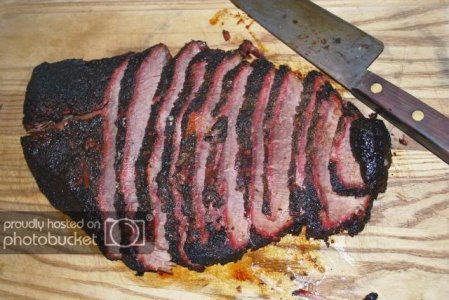Yeah. Underline "suggested." The red OP text is based on a false premise, that judging classes specify methods. At least the training book does not and I don't recall any verbal instructions to use or not use a particular method.I never intended to replace KCBS "suggestions" on judging criteria ...
If some group at KCBS wants to get into describing approved methods and compiling a reference book I guess that is within their purview but as of today AFIK there are NO prescribed methods for any of the scoring categories.
For tenderness, maybe the reps could carry around a Warner-Bratzler machine. (https://www.testresources.net/appli...ratzler-method-for-measuring-meat-tenderness/)
For taste, maybe they could require judges to come a couple of hours early to sample calibration standards for salty, sweet, bitter, mushy, tough, etc. This is the way it is done at Pilllsbury's food labs. Before a panel samples actual product their palates are first calibrated using standards.
Appearance? I would be fascinated to see the required method(s) for determining an appearance score. Items parallel to within one degree? Sauce thickness no more than 30 mils? Item weights within 1/4 oz. of each other? Certain kinds of psyhcologically disturbed people could have a lot of fun with this.
For taste, maybe they could require judges to come a couple of hours early to sample calibration standards for salty, sweet, bitter, mushy, tough, etc. This is the way it is done at Pilllsbury's food labs. Before a panel samples actual product their palates are first calibrated using standards.
Appearance? I would be fascinated to see the required method(s) for determining an appearance score. Items parallel to within one degree? Sauce thickness no more than 30 mils? Item weights within 1/4 oz. of each other? Certain kinds of psyhcologically disturbed people could have a lot of fun with this.



